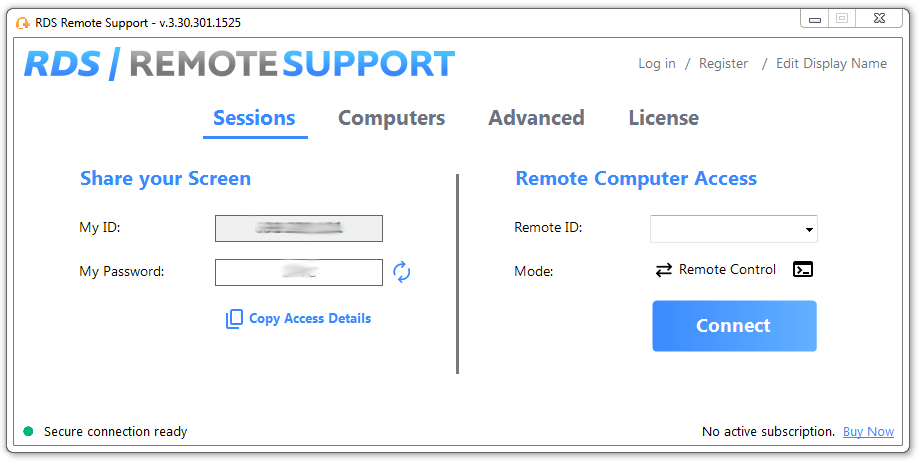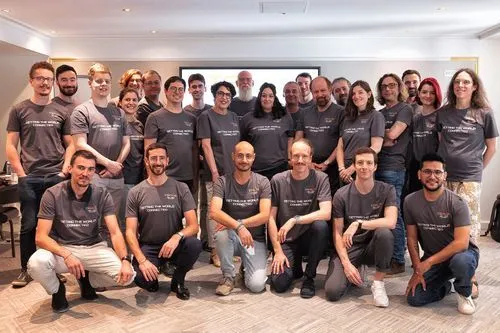What is Microsoft RDP?
Microsoft RDP (Remote Desktop Protocol) is the proprietary protocol developed by Microsoft that enables users to connect to another Windows computer over a network connection. It provides a complete graphical desktop experience and allows input via keyboard and mouse as though the user were sitting in front of the remote machine.
The protocol has been built into the Windows operating system since Windows NT 4.0 Terminal Server Edition and remains core to Windows Server today.
How RDP Works: A Quick Technical Overview
Unlike many remote tools that rely on peer-to-peer connections, RDP operates on a client-server model and the user's device (RDP client) connects to the remote machine (RDP host) using TCP port 3389. The protocol encapsulates screen rendering, user input, device redirection and session data, optimizing for bandwidth and latency.
Key features include:
- Session virtualization: Multiple remote sessions can run concurrently (on supported systems).
- Encryption & authentication: With support for Network Level Authentication (NLA) and TLS.
- Resource redirection: Including printers, drives, USBs and clipboard.
- Bandwidth optimization: Compresses and caches data for efficiency over slow connections.
Advanced RDP Capabilities in 2025:
- GPU acceleration for rich media and 3D applications
- RemoteFX compression and adaptive transport for low-bandwidth performance
- Session shadowing and user support from central consoles
- Smart card, USB device, and printer redirection
- Authentication integration with Azure Active Directory and multi-factor options
These technical features make RDP uniquely suited for modern infrastructure but native limitations remain, especially for multi-user environments or larger deployments.
The 2025 Landscape: RDP in a Zero-Trust, AI-Driven World
Today's enterprise environments demand more than just connectivity: they require context-aware security, seamless access across devices and policy-based session control.
Emerging Trends Impacting RDP:
- Zero-trust architecture (ZTA): Requires strict user/device verification before session launch.
- AI-powered session monitoring: Detects unusual behavior or performance bottlenecks in real time.
- Hybrid environments: RDP is now used across cloud VMs, on-prem servers, and edge locations.
- Remote development & design: Developers, architects, and engineers are using RDP with GPU acceleration for CAD, simulation and IDE tools.
While Microsoft has updated RDP to stay compatible with these shifts, management and security limitations persist.
Why Microsoft RDP Is Still Relevant in 2025
Despite the rise in cloud-native remote tools and zero-trust network access platforms, Microsoft RDP remains deeply embedded in business and enterprise IT environments. Here is why:
1. Tight Windows Integration
RDP is native to most Windows operating systems, including Windows 10, 11 and all modern Windows Server editions. Therefore, there is no need to install third-party software or manage separate client frameworks.
2. Cost-Effective and Scalable
Compared to full VDI deployments or remote access solutions requiring per-user licensing, RDP is cost-efficient but requires sessions management and other additional services such as offered by Microsoft Remote Desktop Services (RDS) or provided by other remote software brands.
3. Security-Enhanced
Modern implementations of RDP (post-Windows Server 2019) include strong encryption, NLA by default and compatibility with VPNs, firewalls and Microsoft Defender for endpoints. Thus, when properly configured, RDP is a more secure option than historically, though additional hardening remains essential.
4. Support for Hybrid and Multi-Cloud Setups
Whether you manage on-prem servers, a provider such as Azure Virtual Desktop instances or a hybrid cloud infrastructure, RDP remains a trusted protocol for remote access, administration and support.
Common Limitations of Native RDP
As you can see, though Microsoft RDP is powerful, it cannot stand alone. Used on top of RDP, Microsoft RDS and competitor third-party application publication software can each benefit addressing the following needs:
- Limited infrastructure surveillance and overview
- Basic assistance potential without real tools
- Manual security hardening required (e.g., restricting access, brute-force protection)
- Inadequately built to protect servers and business infrastructures
This is where the RDS-Tools software kit can significantly enhance functionality. To watch over your systems, you have RDS Tools Advanced Security and Server Monitoring, and to action maintenance and offer support, RDS Tools Remote Support is on hand.
How RDS-Tools Unlocks the Full Potential of Microsoft RDP
RDS-Tools builds on the core strengths of Microsoft RDP by adding enterprise-grade features tailored for remote workforce scalability and security.
Key Benefits of RDS-Tools:
- Advanced monitoring of sessions and resource usage, in real-time
- Report generation, tailored alerts and historical view
- Built-in security enhancements, including 2FA, brute-force protection and IP filtering
- Easy integration, customisation, scalability
- Cross OS compatibility with most requested features
With RDS-Tools, businesses can confidently, securely and efficiently use Microsoft RDP and RDS as the foundation of their remote access strategy.
Microsoft RDP Performance When Properly Enhanced
Feature | Native Microsoft RDP | RDS-Tools Enhanced RDP |
|---|
Secure remote access | ✅ Basic | ✅✅ Hardened & monitored |
Multi-user session support | ❌ Server CALs needed | ✅ Built-in |
Web-based HTML5 client | ❌ | ✅ No client install |
Session management | ⚠ Manual tools | ✅ Advanced dashboard |
Zero-trust readiness | ⚠ Requires 3rd-party | ✅ Integrated controls |
Load balancing & failover | ❌ Manual setup | ✅ Automated & dynamic |
Conclusion: RDP Is Not Going Anywhere
So, what is Microsoft RDP in 2025? It is more than a legacy protocol – it is a proven, adaptable and vital piece of the remote access puzzle. Indeed, for IT admins managing hybrid teams, remote support or distributed infrastructure, RDP remains backbone technology.
With RDS-Tools, you can overcome common RDP limitations to future-proof your remote access environment. Are you ready to upgrade your RDP experience and discover our indispensable security, surveillance and support tool-kit?
Explore how RDS-Tools can help your business enhance performance, security and user experience, all while keeping costs low.
RDS Remote Support Free Trial
Cost-effective Attended and Unattended Remote Assistance from/to macOS and Windows PCs.




)



)
)
)
)
